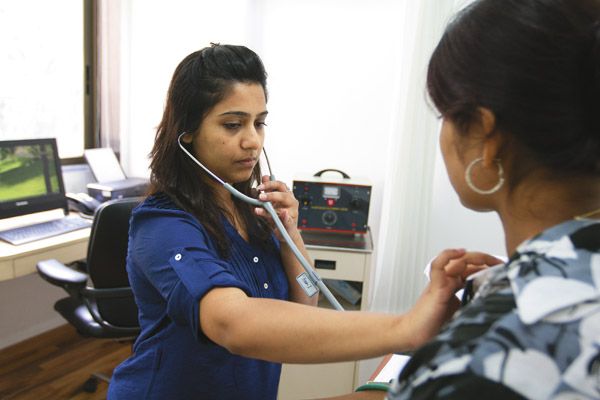
Worsening doctor-patient relation isn’t because of bad doctors. Here are some reasons
An article titled ‘Doctor patient relationship: Changing scenario in India’ was published in the Asian Journal of Medical Sciences on the 1st of this month. It was co-written by Sourabh Pau, Senior Resident and Vikas Bhatia, Dean, Professor and Head of Department of Community & Family Medicine of AIIMS, Bhubaneswar.
The article explores the reasons for the change in doctor-patient relationship, from a stage where doctors were considered god-like to well, docs getting beaten frequently if anything goes wrong(though the article doesn’t put it like that).
Take a look at some of the reasons that the article mentions.
1. The expanding middle class expects more as they pay more
According to the official accounts, the middle class population in India has gone from 25 million in 1996 to 153 million in 2010. And their spend on health has also risen. In 2005, 7% of the disposable income was spent on healthcare by the Indian population. In 2009-2010, it was 14% and the figures were expected to double in the 2014-2015 period.
And when higher amounts are paid for medical services, unsatisfactory results make the spenders irksome, implies the article.
2. The inadequate doctor-patient ratio
The poor doctor-patient ratio in the country is one reason which the article cites. There has been a significant rise in the number of registered medical practitioners- a 17 fold rise as compared to how it was sixty years ago. However, the ratio still isn’t optimal, it’s 1:1700 as opposed to the WHO recommendation of 1:1000.
Regardless of how efficient the doctors are, such a ratio means that the doctor won’t be able to spend a long time during consultation. This, the article mentions has contributed to dissatisfaction among the patients.
3. High levels of corruption practised by a certain percentage in the healthcare industry
Stating that there exists corruption in India is like saying the sky is sun-less at night. The Corruption Perception Index for 2015 put out by Transparency International(TI), the Berlin based corruption watchdog sees India at the 76th position among the 168 countries that were ranked. The high level of corruption gets reflected to some extent in all facets of human endeavour, including healthcare.
Ill advised practices such as prescribing costlier medicines when it’s not necessary or calling for unwanted lab tests are done by a marginal population in the fraternity. However, this gives the people a tainted lens through which to view the entire spectrum of medical practitioners.
4. Time-starved doctors unable to cater to the patient’s desire to take part in the decision making process
As a cut-away from the earlier trend of a paternalistic doctor-patient relation in which the doctor would make the treatment decisions, over the past few years, the patients are expressing desire to be part of the decision making. For this to be possible, a long process involving discussions and dispersal of information by doctors is called for. Something which the time-starved doctors cannot fulfill.
5. Undue expectations caused by the advanced medical technology
There is no doubt that the overwhelming technological growth of recent decades have benefited medicine. The advantages of such technologies are significant for the patients- with aspects like early detection of diseases. But if treatments fail, they assume that the doctor deserves the blame, failing to realize that early detection doesn’t always mean assured cure.
Incidents such as assaults on doctors are shaming the medical profession in the country. A general mistrust of the medical enterprise is brought about by multiple factors. But the brunt is to be borne by doctors-most of them innocent.
Moves such as the recent Maharashtra government decision to assign more number of cops to Mumbai hospitals for doctor’s protection are welcome. But unless the public becomes aware of the context in which the doctors function, things may not change for good.
Image credits: Forbes India
Images may be indicative